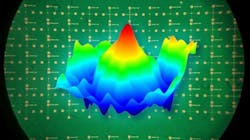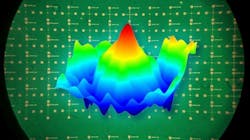Research Insights: Did the memristor breakthrough (finally) occur?
Today’s computers provide very little or no artificial intelligence (AI). They don’t learn, but instead solve problems using rigid algorithms that humans have developed.
How is it possible that humans can solve many kinds of problems at least a million times faster than a classical Von Neumann architecture computer? A major reason is that biological systems combine processing and memory instead of separating them as in traditional digital computers.
To pursue this distinction, the U.S. Defense Advanced Research Projects Agency (DARPA) established the Systems of Neuromorphic Adaptive Plastic Scalable Electronics (SyNAPSE) project in 2009. According to a DARPA statement at the time, “The vision for the … program is the enabling of electronic neuromorphic machine technology that is scalable to biological levels…. Since real-world systems are always many-body problems with infinite combinatorial complexity, neuromorphic electronic machines would be preferable in a host of applications—but useful and practical implementations do not yet exist.”1
In the same reference, a SyNAPSE project researcher added, “SyNAPSE seeks not just to build brain-like chips, but to define a fundamentally distinct form of computational device.” The device came to be called the memristor—a component that changes its resistance depending on its past electrical history, roughly simulating the way the brain’s neurons behave.
Courtesy of SLAC National Accelerator Laboratory
Although several attempts were made to move from promising prototypes to full-scale production memristors—largely by Hewlett-Packard—after several years, the technology appeared to have stalled. A July 2015 article picks up the story via Alex Nugent’s startup, Knowm. The article states, “Alex Nugent, who has been involved in a number of machine learning projects with [DARPA], including the SyNAPSE project that was eventually shepherded through several phases of development by IBM, has uncloaked a startup dedicated to using memristors at the heart of a new kind of analog computer that does what he says is a better job mimicking the function of the human brain.”2
As a Knowm white paper states, “We are the first to develop and make commercially available memristors with bidirectional incremental learning capability. The device was developed through research from Boise State University’s Dr. Kris Campbell, and this new data unequivocally confirms Knowm’s memristors are capable of bidirectional incremental learning…. With this advancement, Knowm delivers the first commercial memristors that can adjust resistance in incremental steps in both directions….” Knowm also is developing computing architectures and algorithms for the memristors.3
The Knowm memristor “… is based on mobile metal ion conduction through a chalcogenide material. The devices are fabricated with a layer of metal that is easily oxidizable, located near one electrode. When a voltage is applied across the device with the more positive potential on the electrode near this metal layer, the metal is oxidized to form ions…. The ions move through a layer of amorphous chalcogenide material (the active layer) to reach the lower potential electrode where they are reduced to their metallic form and eventually form a conductive pathway between both electrodes that spans the active material layer, lowering the device resistance.”3
A June 2016 article discusses experiments that mapped oxygen atom movement within a memristor. Hewlett Packard Enterprise (HPE) scientists used high-power X-ray facilities at the Stanford Linear Accelerator Center (SLAC) National Accelerator Laboratory and Lawrence Berkeley National Laboratory to study the movement of atoms in memristors during switching. The figure in this article shows oxygen atoms driven away from a conducting path (red peak) toward surrounding regions (blue trough) about 200 nm away.
According to Suhas Kumar, an HPE scientist involved in the research, “… the most promising aspect of the … results was that the scientists saw no degradation in switching over more than a billion voltage pulses of a magnitude suitable for commercial use.… Failures occurred when oxygen atoms were forced so far away that they did not return to their initial positions.”4
References
- Chandler, B., “DARPA SyNAPSE Project Summary,” Technology Report, July 23, 2009.
- Morgan, T. P., “Memristors mimic brains for massive machine learning,” The Next Platform, July 8, 2015.
- Neuro-memristive AI, Today. Knowm is now, Knowm, White Paper, 2015.
- “X-ray Experiments Show Hewlett Packard Team How Memristors Work,” SLAC National Accelerator Laboratory, June 13, 2016.
About the Author


